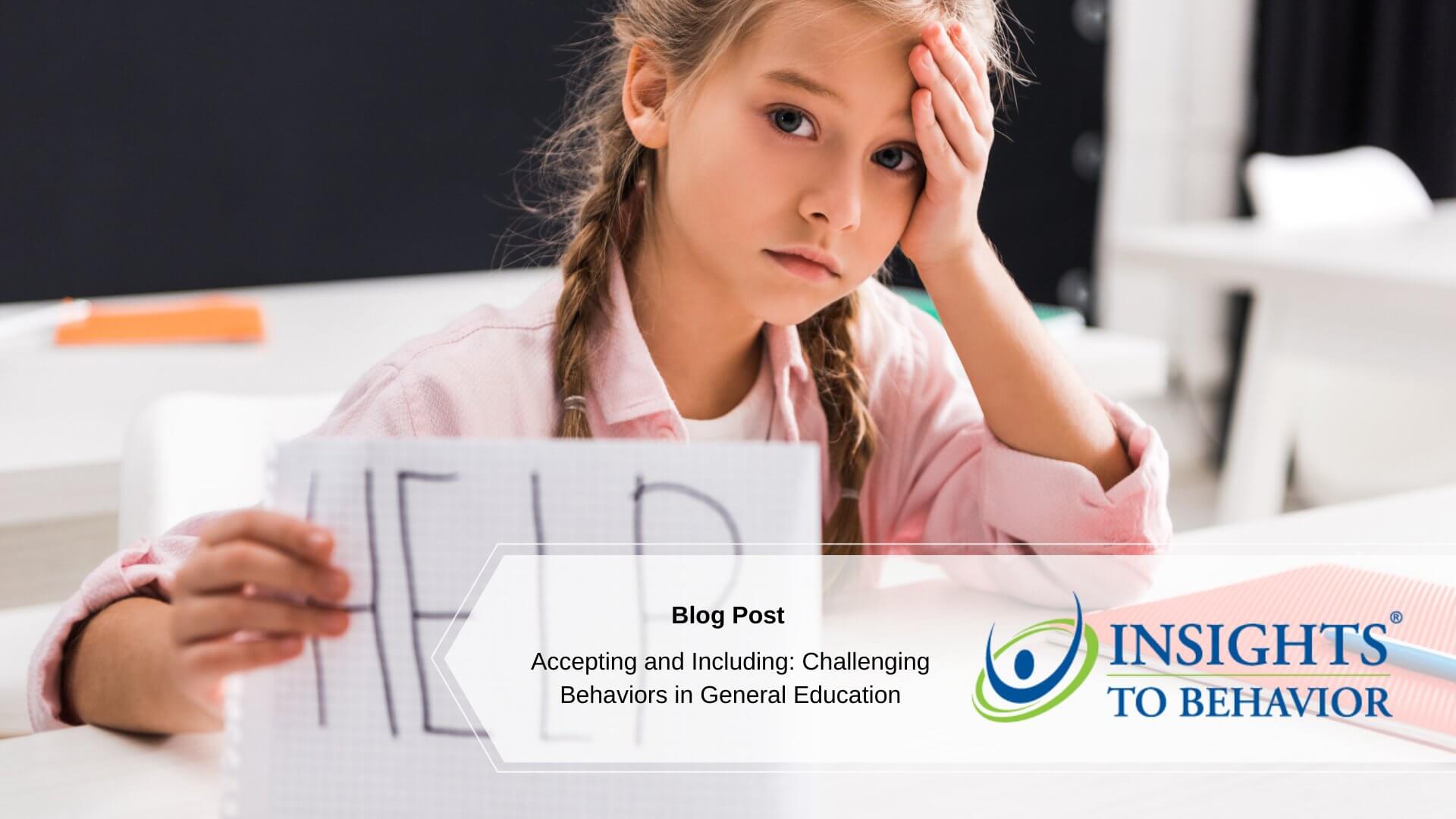Both the teachers and children have been facing new challenges over the course of the past year. Virtual learning has changed the landscape of general education. With these changes come new challenges and new behaviors.
Addressing and managing challenging behaviors is nothing new for teachers. While the environment has changed, many of the same principles still apply.
Defining Challenging Behavior
Challenging behavior is a broad term in an educational setting. Every school and every teacher has a different definition.
There are two broad levels of challenging behavior — low-level disruption and high-level disruption. Low-level disruption could include examples such as calling out or moving around. High-level disruption could include examples such as challenging authority or verbal abuse.
Regardless of the level, what we must remember is that all behavior is communication. What a student is communicating may vary vastly. It may be to communicate a need for attention, a need to escape the situation or even a need for praise.
In some instances, they may be communicating a need due to a specific learning disorder. If we start from the premise that behavior is communication, we can figure out what strategy is best to apply.
Managing Challenging Behaviors
Managing challenging behaviors is a part of effective classroom management. It’s by no means an easy part of the role of educator, but it’s a skill we can all learn with time and experience.
It’s the same components you will have had drilled into you over the course of your teaching career. Environment, relationships, teaching techniques, and strategies.
Classroom Inclusion
We all know that having a good classroom environment is key in getting the best behavior out of your students. Without this, communicating with our students is a shout into the void.
Creating an inclusive classroom revolves around routine, expectations, and fairness.
Routines are flexible and can be changed to suit your classroom. Many teachers see the benefits of structured classroom seating plans, while others may empower students to make their own seating choices.
There’s also the increasingly popular option of flexible seating. That is creating an environment that doesn’t look like a traditional classroom. This plan has shown incredible benefits for positive behavior in the classroom.
Additional routines may include greeting students at the door or taking five minutes at the start of the lesson to socialize.
Once your routines are down, you can establish expectations. Expectations should be explicitly verbally stated, as well as visible to students at all times.
Ideally, they should be created and agreed upon by both teachers and students to create an inclusive environment. With your expectations set, make sure to hold them fairly. Inconsistency is a surefire way to encourage challenging behavior.
Relationships
Any experienced educator will tell you a vital component to managing behavior are relationships. By this, we mean establishing and building relationships with your students. This can link into your routines, like greeting students at the door or regularly checking in.
But relationships need to be maintained. That way, when challenging behavior does arise, you have that foundation to work from. The more knowledge and goodwill you have from your students, the more you have to work with when you need to.
Strategies for maintaining relationships include keeping the five-to-one ratio. That is, for every negative interaction with a student, you should have five positive interactions with them. Keeping track of your interactions can help you figure out where you need to do more regular check-ins.
When conflict arises, as it so often does, you need to restore the relationship after. Discuss with empathy and take ownership of where you both could have acted differently. Ensure the student knows the issue is resolved and move on together.
Teach Positivity
Research has shown the consequences of negative reinforcement, so add positivity to your teaching techniques.
This can be in the form of changing negatives into positives. For example, in a low-level disruption like calling out, frame the correction positively. So instead of “stop calling out”, try “please raise your hand”.
It sounds simple, but you would be amazed how far positive commands go with students. Being politely reminded of what they should do, instead of told what they shouldn’t may yield much better behavior.
Similarly, instead of addressing low-level disruption, focus on addressing positive behavior instead. If students with challenging behavior see praise is given for positive interactions, they are more likely to amend their own.
Strategies for Challenging Behavior
While all of the above should work in theory, all educators know theory and practice don’t always align. Challenging behavior is a part of all classrooms, no matter how inclusive, so having pre-planned strategies is vital.
A common strategy is a functional behavior assessment (FBA). FBAs help uncover why a student is engaging in challenging behavior. Once the “why” is uncovered, you can move onto a positive behavior intervention plan (PBIP).
PBIPs help prevent more incidents of challenging behavior and increase positive behavior. Most PBIPs include procedures for challenging behavior and positive consequences for appropriate behavior.
Challenging Behavior and Special Educational Needs
14% of all children in general education have special educational needs. Children with special educational needs can come with their own unique challenging behaviors.
Many of the same principles above can apply to the majority of learners with special educational needs. For times when challenging behaviors arise, teachers should refer to the student’s education, health, and care plan (EHC). From here strategies like an applied behavior analysis may be an option to help manage behavior going-forward.
Behavior Plans for General Education
Insights to behavior offer software to create, track and monitor behavior plans. We empower staff with the tools to tailor behavior plans that work in general and special education. Get in touch with us today to see how we could help your school.




